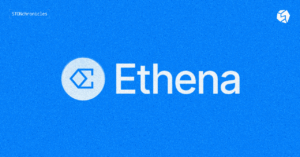Crypto space is determined by profitability, making select projects attractive from a financial point of view. One of the most important indicators determining the profitability of a project or liquidity pool is the APY – Annual Percentage Yield.
What Is APY?
The APY is a formula that calculates the rate of returns one can expect to receive from the funds they deposit into a liquidity pool or farming platform. The APY usually includes compounded interest, making the returns users can expect to receive rather considerable over a period of time. Most platforms and liquidity pools indicate high returns of APY for advertising purposes. However, users should be aware of the fact that such returns will only be possible if the deposited funds remain locked throughout the indicated period of time.
Calculating APY
APY is usually calculated based on the following formula:
APY = (1 + r/n)n – 1
Where:
R is the annual interest rate;
N is the number of compounding periods per year.
The given formula produces a nominal value, which does not take into account the possible fluctuations of prices and interest rate variations that can take place throughout the period N. Users willing to deposit funds must be aware of the given factor and this makes the APY an unreliable indicator for determining the actual amount of returns they can expect to receive over the entire period of the lockup.
APY Caveats
The APY on most platforms also presumes that users will be depositing funds and manually compounding the returns. This can provide some measure of guarantee that the indicated APY will be achieved.
There are also risks associated with trusting APY, as most of the indicated values are usually far from realistic. The general rule of thumb is that the APY cannot exceed a market average. APY values that greatly outstrip market averages are usually either part of scam schemes or are merely advertising tricks used to attract liquidity pool participants.
The number of compounding periods also affects APY, since the higher the number of periods – the higher the potential APY, as the funds will be redeposited into the pool. Another potential caveat is the indication of the APR, or Annual Percentage Rate, which is merely simple interest on the funds deposited in the pool without taking into account compounding factors.
A major problem for liquidity pool participants is impermanent loss, which is the sudden change in the price of asset pairs, significantly differing from the initial price at which they were deposited. Impermanent loss can result in a significant deterioration of APY returns, regardless of the indicated interest.
Selecting The Most Profitable Pool Based on APY
Since the impermanent loss on decentralized exchanges is a common risk, users willing to deposit on DEXs should pay attention to market average yields on reliable pairs with relatively stable prices. Another important issue to factor in is the reliability of the DEX itself and the options available in the pool, such as auto-compounding, lack of restrictions on premature withdrawals, and short deposit timeframes.





